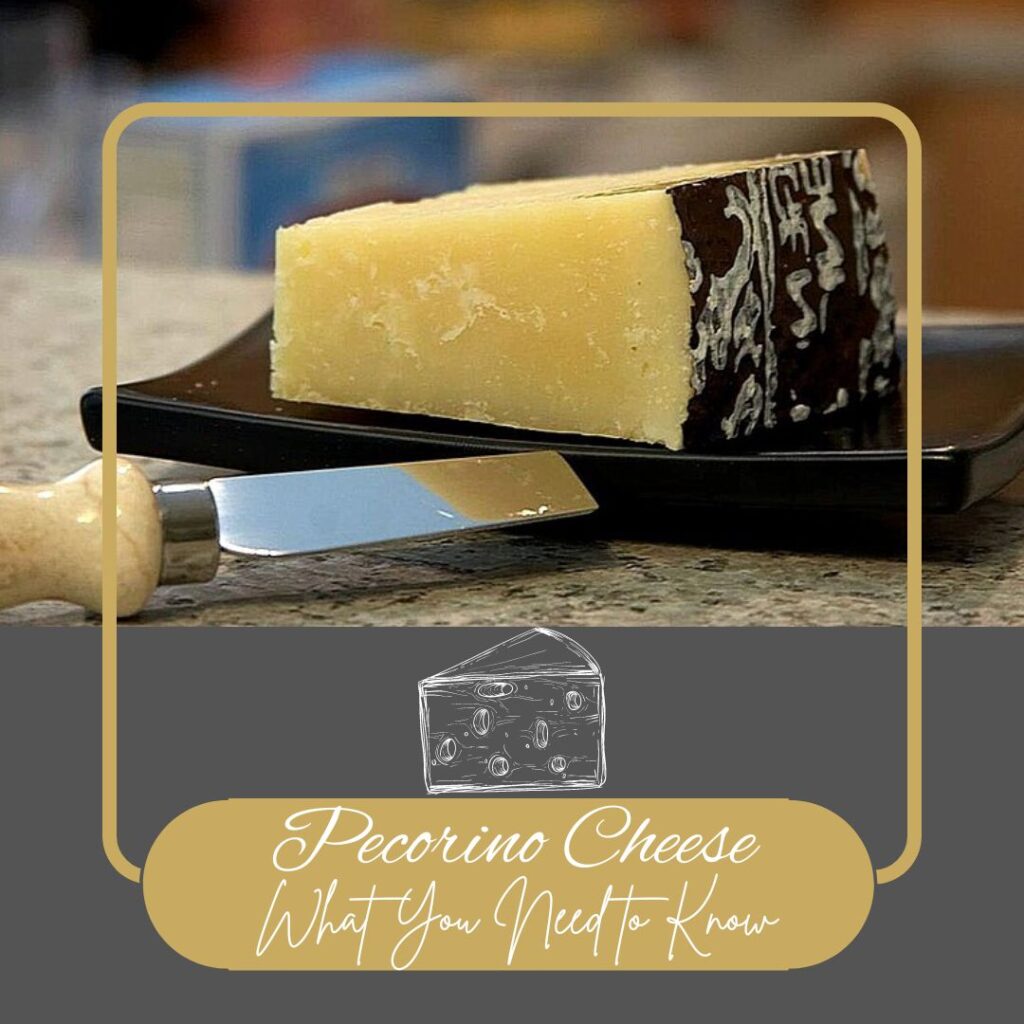Derived from the versatile family of Italian cheeses, Pecorino cheese is made from sheep’s milk. Each variety offers unique flavors influenced by its region and aging process. Among the most famous types is Pecorino Romano, known for its sharp and salty profile, which has been a staple in Italian cuisine for centuries. Its bold flavor and unique characteristics set it apart from other Italian cheeses such as Parmigiano-Reggiano. In this blog post, we will explore what Pecorino Romano cheese is, its culinary uses, and whether it’s good for heart health.
What is Pecorino Romano Cheese?
Pecorino Romano is a specific type of Pecorino cheese, primarily made from sheep’s milk. The word “Pecorino” comes from the Italian word “Pecora,” which means sheep. This type of cheese originates in the Lazio region of Italy, especially around Rome, and has been produced for over 2,000 years. Thus, it holds a rich history and cultural significance in Italian cuisine.
Key Characteristics of Pecorino Romano:
- Sheep’s Milk: The main ingredient is sheep’s milk, which gives the cheese its tangy and strong flavor to the cheese. The intensity can vary based on aging.
- Hard, Aged Cheese: Producers age Pecorino Romano for a minimum of five months, resulting in a firm and crumbly texture that is perfect for grating. In some versions, it can be aged up to a year or more to deepen the flavor profile.
- Salty and Sharp Taste: People recognize the cheese for its intense, salty flavor, which is significantly more pronounced than that of milder cheeses like Parmigiano-Reggiano. Cooks love Pecorino Romano for its briny and piquant taste, making it a favorite in Roman cuisine, especially in classic dishes like Cacio e Pepe and Carbonara.
- Versatile Uses: Pecorino Romano is commonly used in Italian cuisine. They can grate it over pasta or salads, mix it into sauces, or enjoy it on its own. With its strong and tangy flavor, Pecorino Romano is perfect for dishes where cheese is a key ingredient, or you can use it in moderation to enhance the overall taste of the meal.
Pecorino Romano vs. Parmigiano-Reggiano:
A common question in cooking is whether to use Pecorino Romano or Parmigiano Reggiano. Although both are hard Italian cheeses, their flavor and textures vary considerably. Parmigiano-Reggiano comes from cow’s milk and offers a delicate, nutty flavor, while Pecorino Romano comes from sheep’s milk and delivers a salty punch. Due to its sharpness, Pecorino is often used in smaller quantities or in recipes that can balance its intensity. Pecorino Romano is the traditional choice for dishes like Pata alla Gricia or Amatriciana. For recipes that call for milder cheese, Parmigiano-Reggiano or Grana Padano may be more appropriate.
Is Pecorino Romano Good for Heart Health?
Regarding heart health, Pecorino Romano can have both advantages and disadvantages. Cheese is rich in calcium, protein, and essential fats but also high in sodium and saturated fats, raising heart health concerns.
The Pros:
- Rich in CLA (Conjugated Linoleic Acid): Pecorino Romano has higher levels of conjugated linoleic acid (CLA) compared to cheese made from cow’s milk. CLA is a type of fatty acid linked to several health benefits, particularly for heart health. Some studies suggest that cheese that is rich in cis-9, and trans-11 CLA may aid in reducing body fat and protect against heart disease by reducing inflammatory markers and platelet aggregation (Sofi et al., 2008).
- Good Source of Calcium and Protein: Like other cheeses, Pecorino Romano is a reliable source of calcium and protein. It is particularly high in bioavailable calcium, which is crucial for bone health and dental care (O’Callaghan et al., 2017). Further studies indicate that its consumption helps in achieving the daily intake requirements of calcium (Mattera et al., 2016). Protein plays a key role in building and repairing tissues. The protein content in Pecorino Romano can reach up to 40%, making it an excellent source of high-quality protein, which is vital for muscle maintenance and overall health (O’Callaghan et al., 2017).
The Cons:
- High Sodium Content: One drawback of Pecorino Romano is it’s high in sodium. Pecorino Romano typically contains around 5.14% salt, making it one of the saltiest cheeses. Furthermore, it provides over 30% of the recommended dietary allowance for sodium per 100 g serving (Andrea et al., 2024). Due to its aging process and intense flavor, it contains more salt than milder cheeses. Excessive intake of sodium intake can be a risk factor for high blood pressure and cardiovascular disease, so it’s important to enjoy Pecorino Romano in moderation.
- High Saturated Fat: Pecorino Romano is high in saturated fats, which can lead to elevated cholesterol levels if consumed in excess. It is high in saturated fat, but its health effects depend on dietary context and individual responses (Jeff et al., 2005). While occasional consumption may be safe, those with heart conditions should monitor high-fat dairy intake.
Conclusion: Moderation is Key
Overall, you can include Pecorino Romano in a heart-healthy diet, but moderation is crucial. The high levels of CLA may benefit heart health, but the sodium and saturated fat call for sparing use, especially for those with cardiovascular concerns. Opt for small portions of this cheese with a diet rich in fruits, vegetables, and whole grains for heart health.
When to Use Pecorino Romano
Pecorino Romano is a versatile cheese that can enhance a wide range of dishes. Here are some interesting ways to use it.
- Grated Over Pasta: Chefs often grate Pecorino over pasta, particularly in classic Roman dishes like Cacio e Pepe and Carbonara. Its salty kick complements the richness of eggs or cream, adding depth to simple pasta sauces.
- In Sauces: Incorporate Pecorino into creamy sauces for an additional layer of flavor. It beautifully provides a tangy undertone to a dish.
- As a Topping: Shave Pecorino and add it to salads, soups, or grilled vegetables to enhance flavor without overpowering.
- On Its Own: You can enjoy aged Pecorino as part of a cheese platter, pairing it with fruits, crackers, and a drizzle of honey to balance its saltiness.
Final Thoughts
Pecorino Romano is an ancient and robust cheese that has stood the test of time. Whether grated over pasta or included on a cheese board, it offers a unique flavor profile that distinguishes it from other Italian cheeses. While it contains health-promoting CLA, its high sodium and saturated fat suggest moderation, especially for heart health. By incorporating Pecorino Romano into a balanced diet, you can enjoy its distinct taste while prioritizing overall well-being.
Thank you for reading, for more interesting articles visit our homepage



